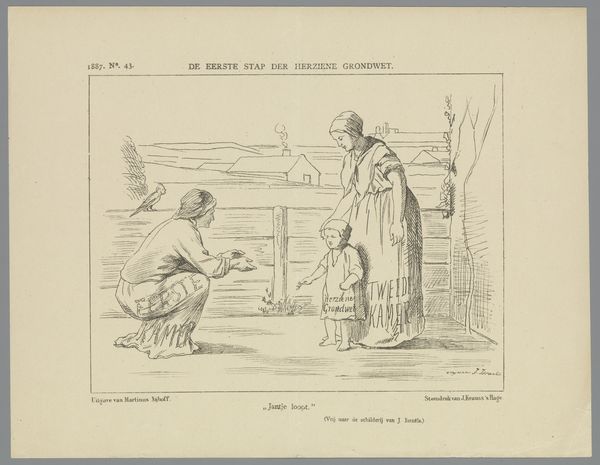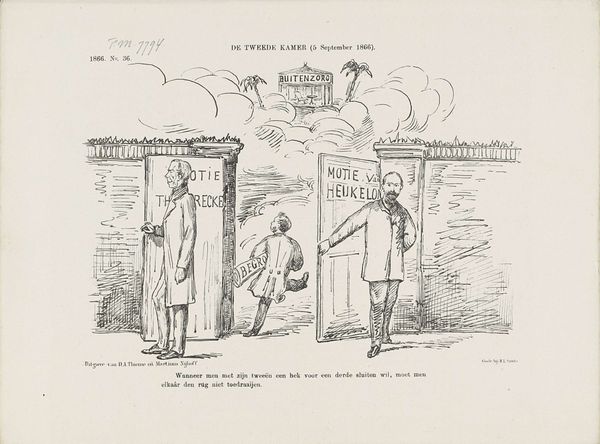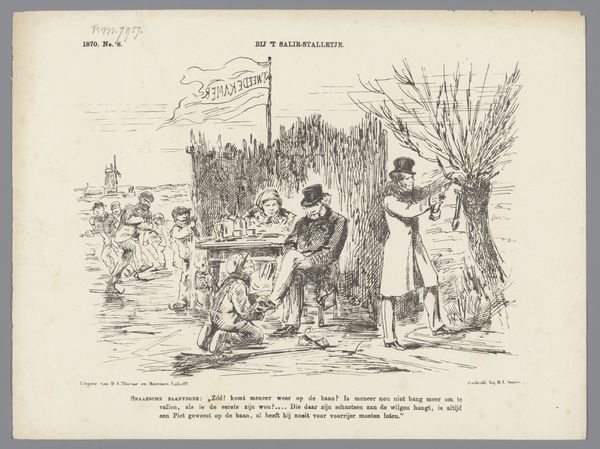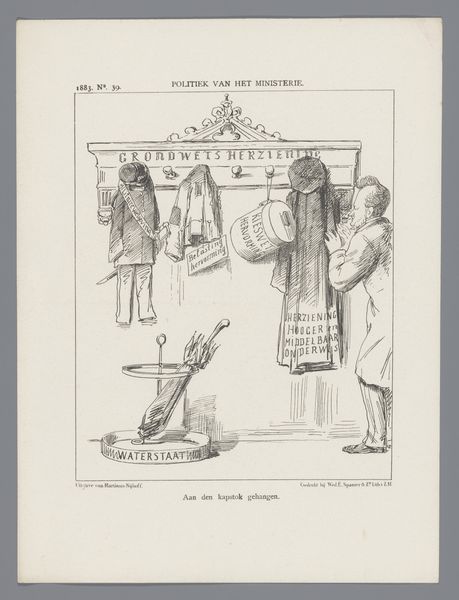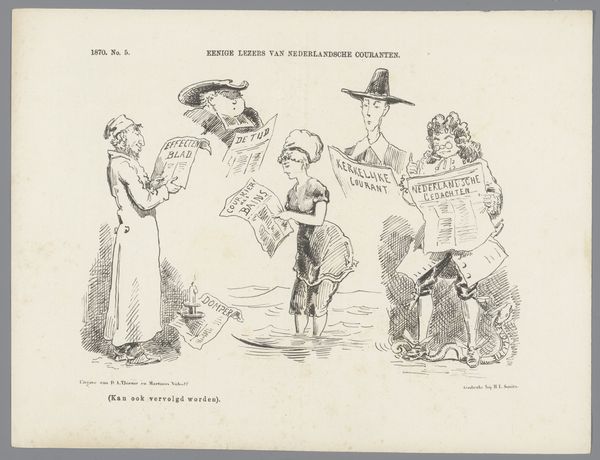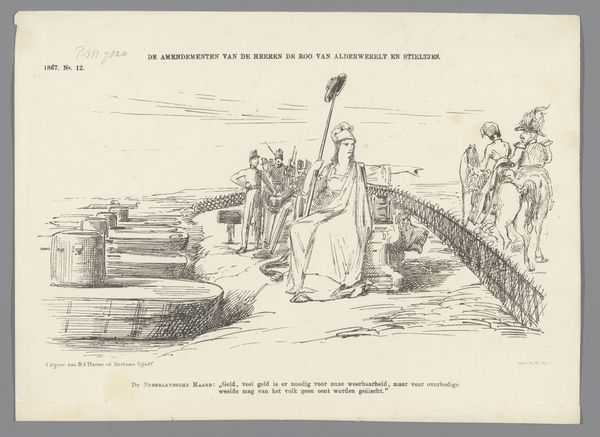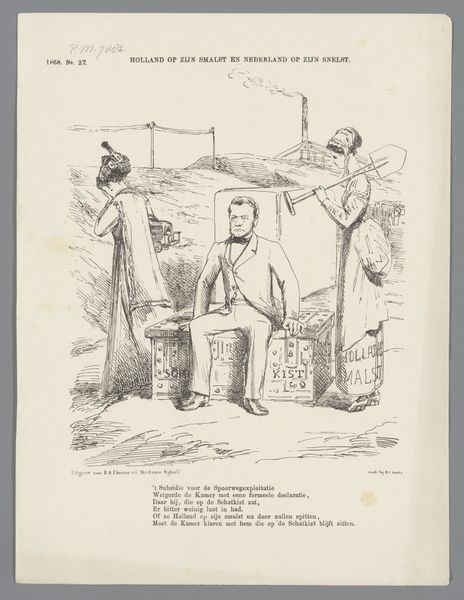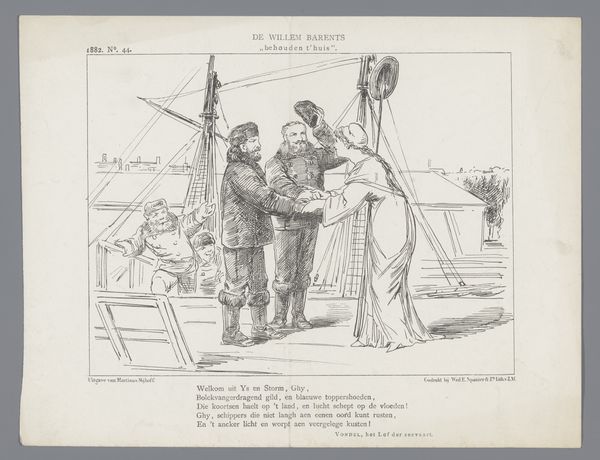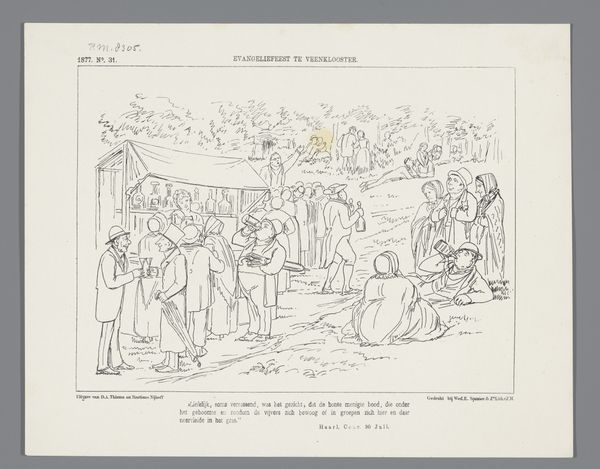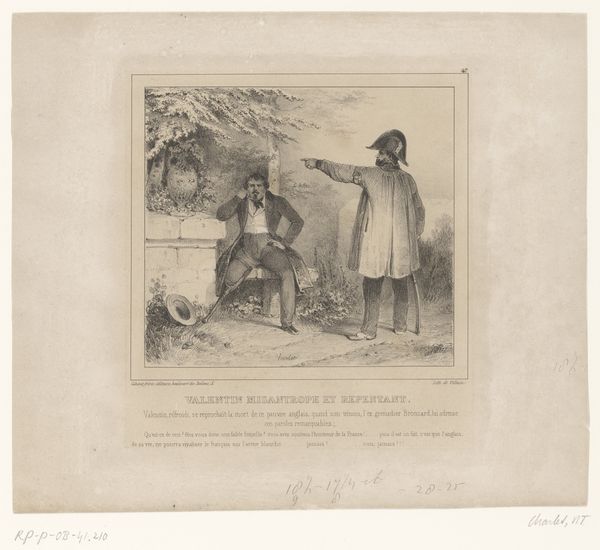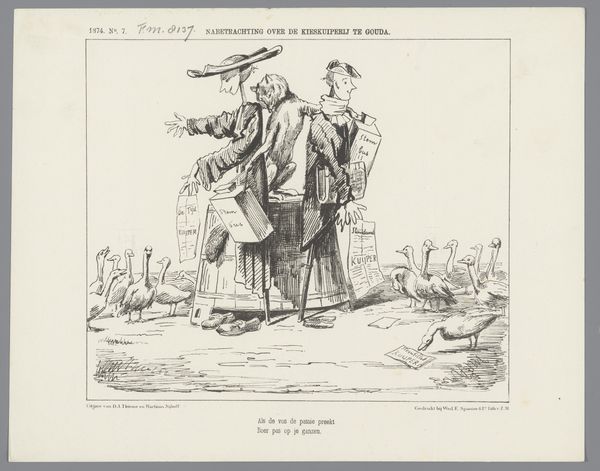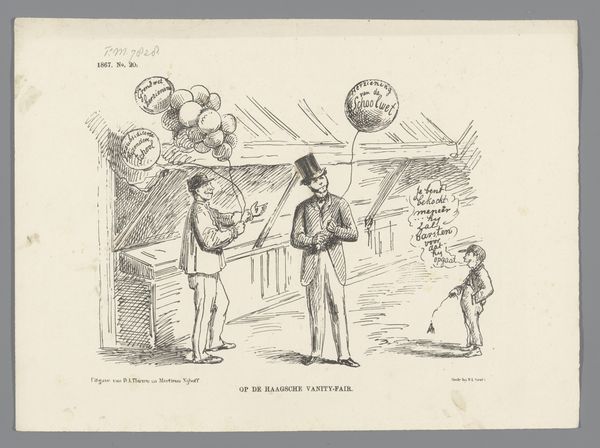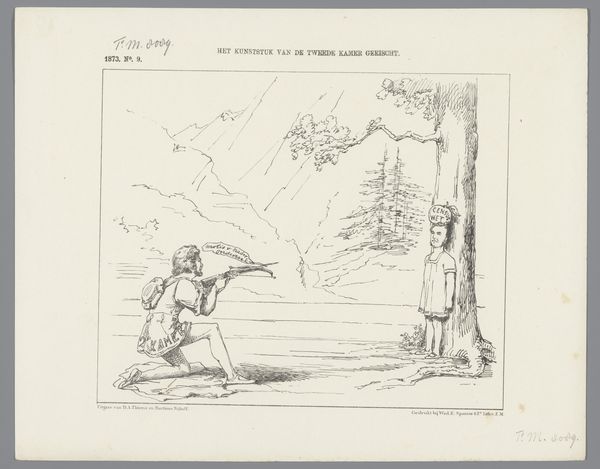
Spotprent op de plannen tot aflossing van de nationale schuld, 1875 1875
0:00
0:00
print, etching
#
narrative-art
# print
#
etching
#
caricature
#
orientalism
#
history-painting
Dimensions: height 215 mm, width 275 mm
Copyright: Rijks Museum: Open Domain
Curator: This etching, created in 1875 by Johan Michaël Schmidt Crans, is titled "Spotprent op de plannen tot aflossing van de nationale schuld," which translates to "Cartoon on the plans for the repayment of the national debt." Editor: The overall feel is stark, yet filled with subtle commentary. The contrast between the standing figure and the wading one immediately evokes tension. What do you make of that heavy symbolism? Curator: Given the title, it’s clear this image engages with the political discourse of the time, likely critiquing the burden placed on the colonies to alleviate the national debt of the Netherlands. Look at the man, presumed to be a Dutch colonial official guarding the treasure chest of "53 Million", juxtaposed against the Indonesian mother wading through water, seemingly pleading for help. Editor: That posture, with her hand raised towards the sky, and cradling the child suggests both desperation and hope. Her struggle immediately made me think of classical depictions of suffering, the Madonna perhaps. What do the riches in the chest symbolise? Curator: The treasure chest labeled "Schat," meaning "treasure," and displaying a hefty sum of 53 million, represents the wealth extracted from the colonies. The amortization scroll asking for 10 million emphasizes the demand on colonial resources to service the national debt, at the expense of those depicted drowning. Editor: The artist powerfully juxtaposes Western opulence and colonial deprivation through his depiction of figures, both as social types and as visual icons of injustice. His composition employs traditional symbols to evoke collective empathy. Curator: Precisely. The imagery plays on contemporary anxieties surrounding the national debt while commenting directly on colonial policy and its effect. This etching’s satirical edge sheds light on economic exploitation through caricature. Editor: Indeed. Even through the rather rudimentary lines of the print, the scene reveals the complex power dynamics that have shaped perceptions and lived realities. Curator: It's a potent visual argument for its time, and still provokes reflection today on the legacies of colonialism and economic disparity. Editor: It does make you question the values driving these historical power dynamics, even when the treasures might seem to be overflowing.
Comments
No comments
Be the first to comment and join the conversation on the ultimate creative platform.
